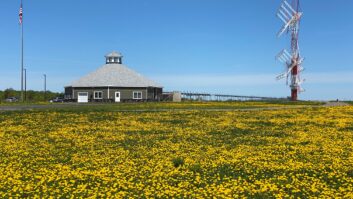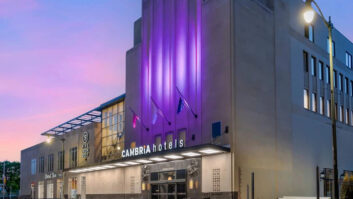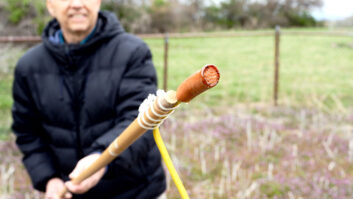One in a series of occasional articles to help AM radio engineers and owners enhance their operations.
Many broadcast engineering professionals are responsible for facility management and maintenance. If that is your role, it is important to realize that the RF environment for which you are answerable includes more than your primary transmissions. The overall electromagnetic energy environment of your facility should be monitored as thoroughly as air and water quality.

Sign is free as a PDF at www.mysafetysign.com
Electromagnetic energy is generated over a wide spectrum of frequencies from many different sources. They include extremely low frequency (ELF), radio frequency (RF) and microwave (MW) radiation, generically referred to as “EMF.”
ELF fields are produced by power lines, electrical wiring and electrical equipment. RF and MW radiation is emitted by your broadcast transmitters, cellular phones, WiFi, microwave ovens, heat sealers, high-frequency welders, induction heaters, flow solder machines, communications transmitters, radar transmitters and many other sources.
These frequencies, along with visible and ultraviolet light, are known as non-ionizing radiation to distinguish them from the more dangerous X-rays, gamma rays and other higher energy level rays, which are known as ionizing radiation. (Ionizing radiation is not addressed here but may be a factor if you operate circuits with very high voltage in TV or shortwave transmitters.)
Guidelines
Standards have been set for acceptable electromagnetic energy levels. The American National Standards Institute (ANSI) and the Institute of Electrical and Electronics Engineers (IEEE) have studied and identified acceptable intensity and exposure upper limits.It is your responsibility to identify and document the electromagnetic environment to ensure that your workplace and the general public are appropriately protected from excessive EMF exposure.
The FCC has established maximum permissible exposure (MPE) levels for human exposure to RF. The commission also has published guidelines and procedures for evaluating RF health exposure. While the focus of the FCC is strictly on transmitters it licenses, OSHA is very much concerned with the workplace. OSHA has published its own guidelines that agree with those of the FCC, but go beyond them in a number of areas. Industry Canada standards are similar to OSHA.
The General Duty Clause of OSHA states that an employer is required “to furnish to each of his employees, employment and a place of employment which are free from recognized hazards that are causing or are likely to cause death or serious physical harm to his employees.” High EMF levels in and around your broadcast facility can affect the general population and, specifically, at-risk individuals.
But potentially hazardous exposure to non-ionizing radiation is a possibility in thousands of occupational situations, with commercial and industrial radiation applications outside the broadcast industry continuing to grow. What’s more, in addition to effects on humans, RF energy can interfere with other electronic equipment such as computer systems, wireless devices, RFID systems and medical equipment (defibrillators, pacemakers, infusion pumps, to name a few). Often, these types of equipment are vital to providing workplace or public safety.
As with all environmental concerns, the electromagnetic environment is a risk management issue. By recognizing it as such, a facility manager has taken a positive step toward protecting employees, visitors, and the public as well as avoiding potential litigation should an incident occur.
Few businesses can operate in isolation today, and the lines between safety and mission-critical operations sometimes are blurred. Note that FCC regulations are “health effect” rules, whereas OSHA rules are “workplace safety” rules. There is a world of difference. Then there are lawyer’s rules, which are that “any harm or claim of harm can be litigated” — often at great cost!
Welcome to the world of EMF risk management, where you really need to have radiation safety procedures in place.
For more on this topic, see the RF Safety tab under Columns at radioworld.com.
Lawrence Behr is founder of Lawrence Behr Associates and RF equipment manufacturer LBA Technology. A former radio and TV station owner, he was a founding member of the Society of Broadcast Engineers. Find past articles at radioworld.com, keyword Behr.












